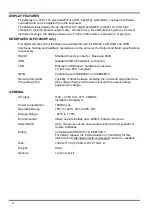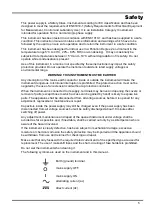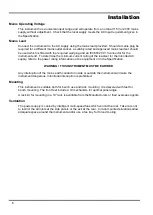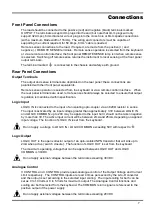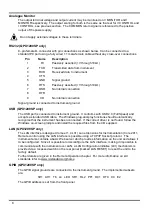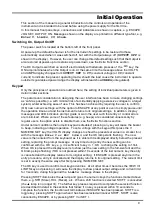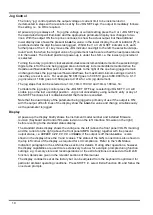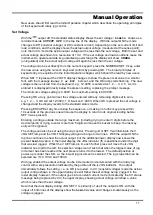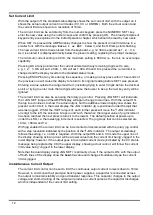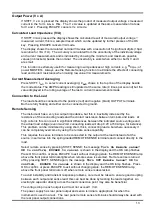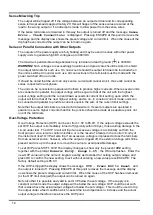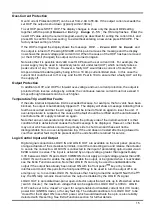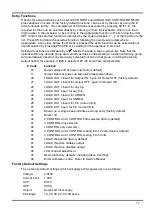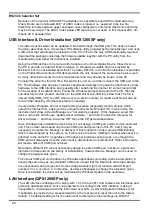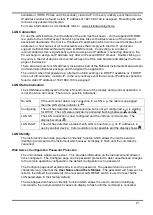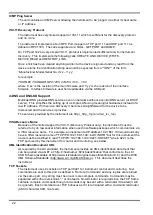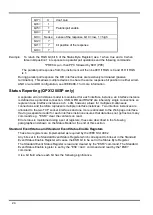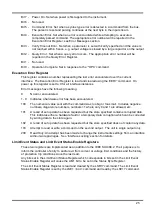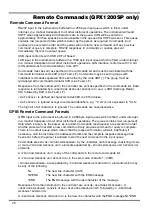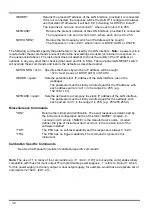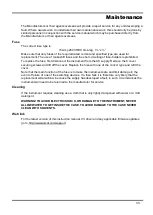
18
Remote Operation
The QPX1200SP can be remotely controlled via its RS232, USB, GPIB, LAN or Analogue
interfaces; the QPX1200S has Analogue interfaces only.
USB remote control operates in a similar way to RS232 but via the USB connector. Software
supplied with the instrument sets up the controlling computer to treat the USB connection as a
virtual COM port. Application software on the computer can then access the instrument via that
COM port.
The LAN interface is designed to meet 1.4 LXI ( Lan eXtensions for Instrumentation) Core 2011.
Remote control using the LAN interface is possible using the TCP/IP Sockets protocol. The
instrument also contains a basic Web server which provides information on the unit and allows it
to be configured from a web browser. Simple command line control from the browser is also
possible.
Analogue remote control is activated from the BUS menu but the functions (V and/or I) and
scaling are set from the Extra Functions menu, see previous section.
Bus and Address Selection
Press SHIFT, BUS to display the bus class –
Digital
or (
None
on QPX1200S) or
Analogue Remote
. The present selection is indicated with a
. The bus class can be
changed directly by keying in the number (0 or 1) beside the class or by moving to the required
type using the JOG SET control; the selected bus is indicated by the square brackets [ ]. Press
OK to select the bus class. At any time before the OK key is pressed the selection can be exited
without change by pressing ESCAPE.
If
Analogue Remote
has been selected, pressing OK returns the display to the standard
status screen.
If
Digital
has been selected, pressing OK changes the display to show the current digital
interface
Address
and the message
Set Address with Jog.
Change the address
using the JOG SET control. Press OK to confirm and return to the standard status screen.
Setting the address is essential for GPIB operation but use can be made of the ADDRESS?
command over any of the other interfaces to easily identify which instrument is being controlled
by a particular COM port (for RS232 or USB) or TCP socket (for LAN). Note that the LAN
interface also has a separate 'Identify' function, accessible from the instrument's web pages, that
flashes the instrument's display until the function is cancelled.
If analogue is selected then the digital interfaces may be used to query the instrument but not to
change any settings.
Interface Locking (QPX1200SP only)
All the remote interfaces are live at all times, to remove any need to select the active interface
and to ensure that the LAN interface is always available (as demanded by the LXI standard). To
reduce the risk of the instrument being inadvertently under the control of two interfaces at once a
simple lock and release mechanism is provided in the instruction set. The lock is automatically
released where it is possible to detect disconnection and when the local button is pressed.
Access to the interfaces may also be restricted using the web pages.
Any interface may request to have exclusive control of the instrument by sending an “IFLOCK”
command. The lock may only be released by sending an “IFUNLOCK” command from the
interface instance that currently has the lock and may be queried from any interface by sending
an “IFLOCK?” command. The reply to any of these commands will be “-1” if the lock is owned by
another interface instance, “0” if the interface is free and “1” if the lock is owned by the
requesting interface instance. Sending any command from an interface without control privileges
that attempts to change the instrument status will set bit 4 of the Standard Event Status Register
and put 200 into the Execution Error Register to indicate that there are not sufficient privileges for
the required action.
Note:
it is also possible to configure the privileges for a particular interface to either ‘read only’ or
‘no access’ from the Web page interface.

